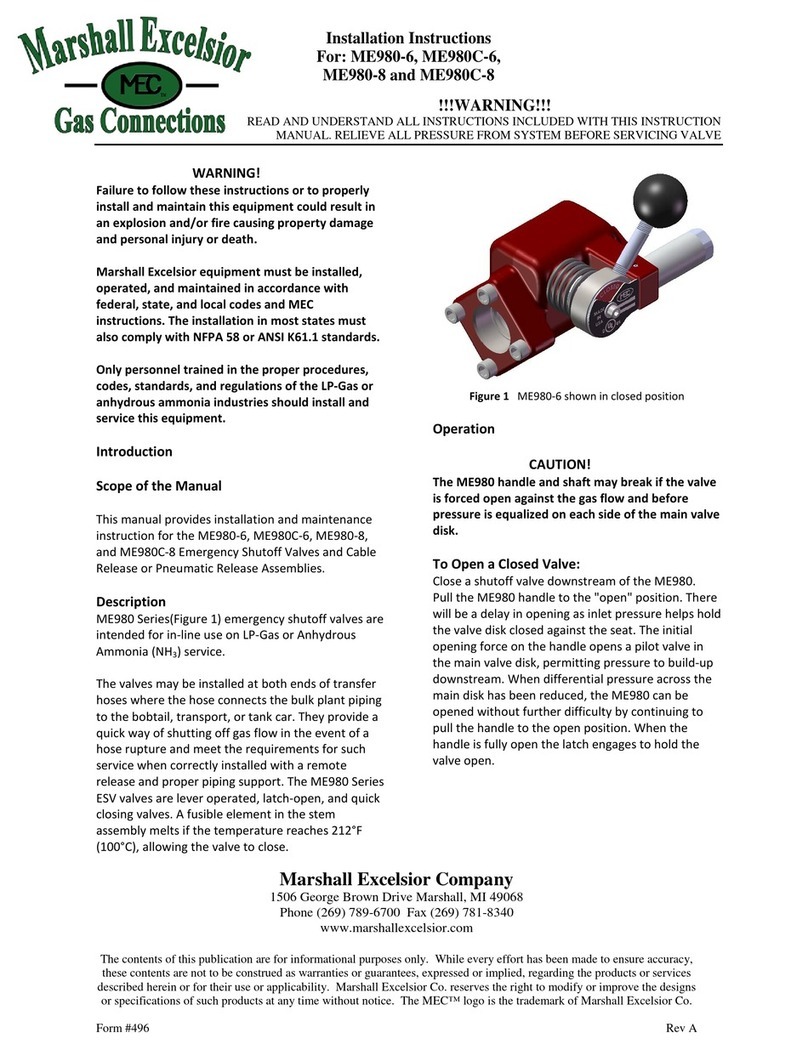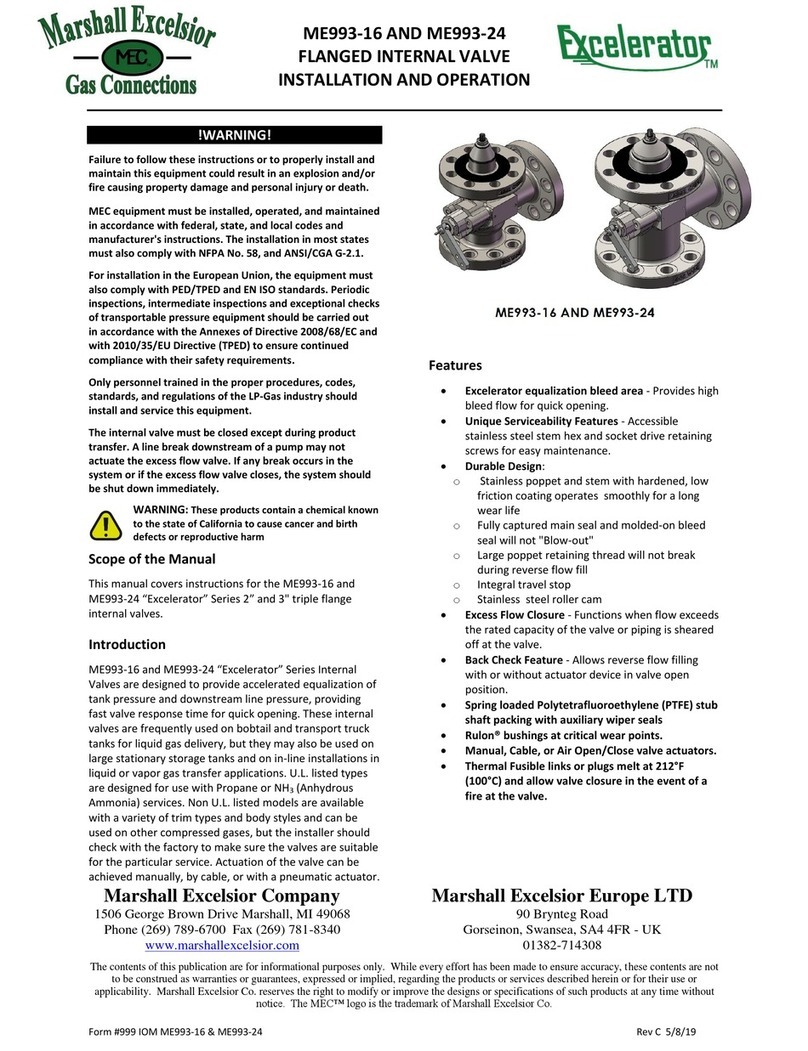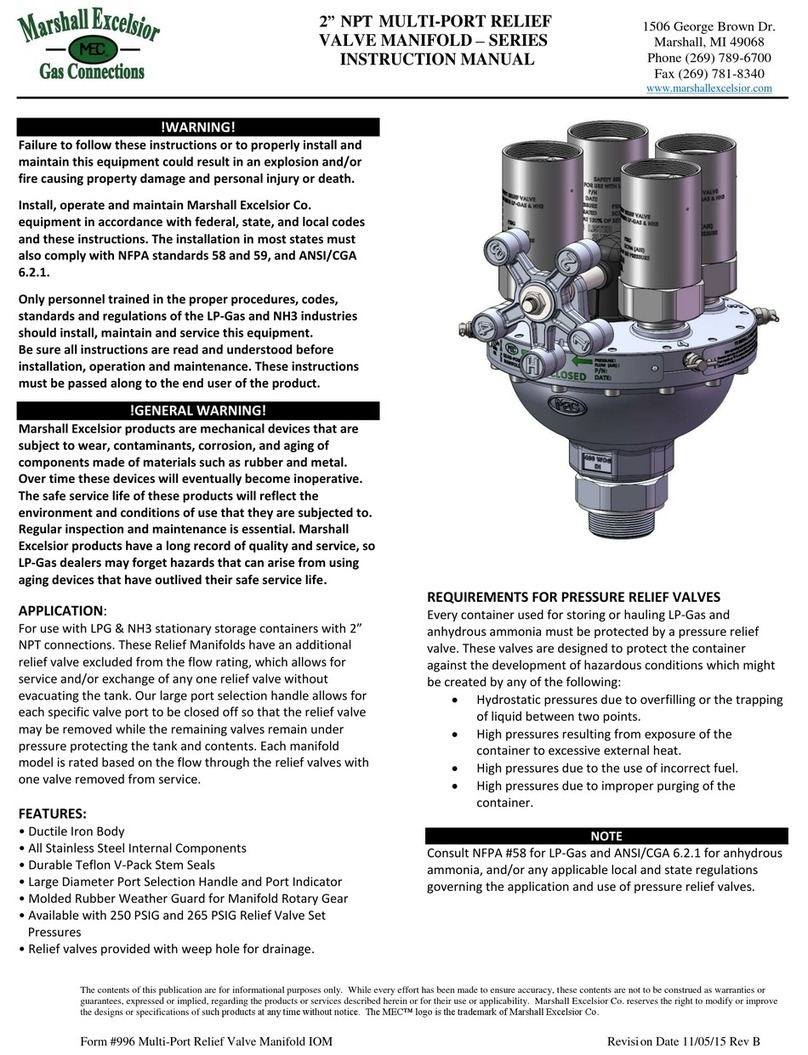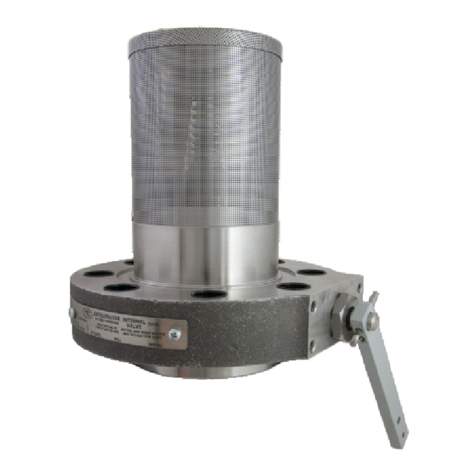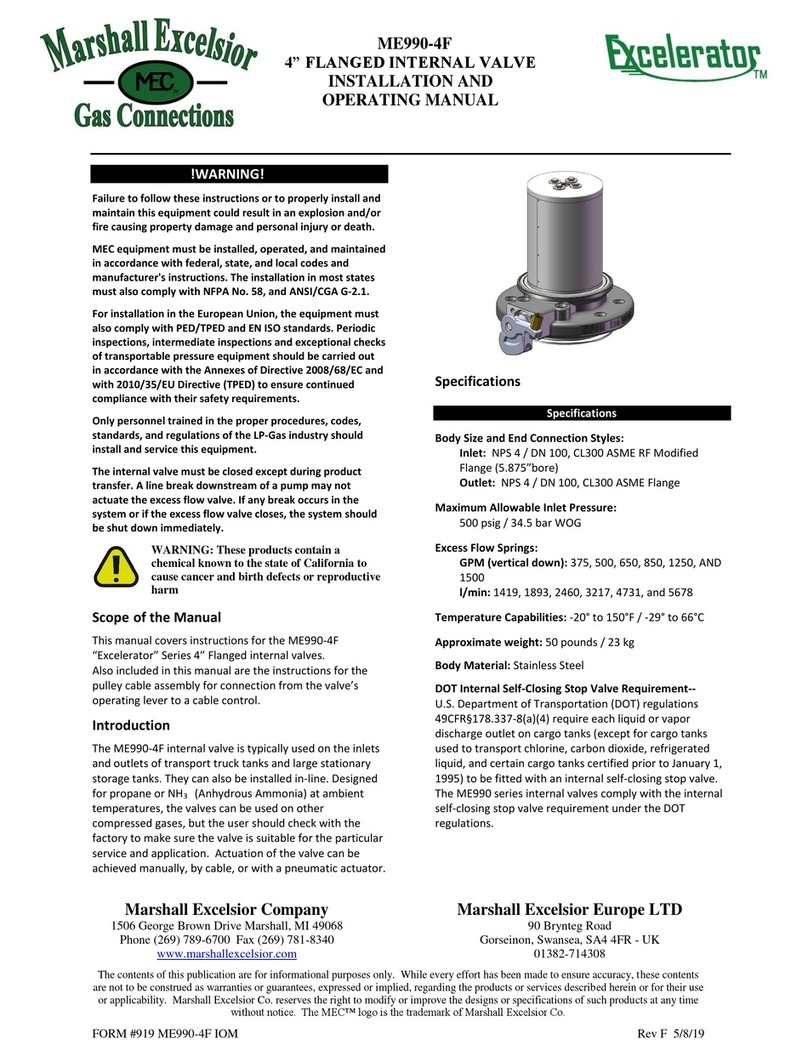
Installation and Operation Instructions for
For: ME670DBC
LPG / NH3 Filler Valve with Back Check
The contents of this publication are for informational purposes only. While every effort has been made to ensure accuracy, these contents are not to be
construed as warranties or guarantees, expressed or implied, regarding the products or services described herein or for their use or applicability. Marshall
Excelsior Co. reserves the right to modify or improve the designs or specifications of such products at any time without notice. The MEC™ logo is the trademark
of Marshall Excelsior Co.
FORM #1115 ME670DBC FILLER VALVE W/BACK CHECK IOM Rev A 10/24/17
1506 George Brown Drive
Marshall, MI 49068
Phone (269) 789-6700
Fax (269) 781-8340
www.marshallexcelsior.com
Installation
1. Check hose end valve and filler valve for foreign
materials and, if present, remove with extreme care. If
foreign material cannot be safely removed, do not
proceed with filling and replace valve.
2. Apply a suitable PTFE thread sealant compound to the
external NPT threads.
3. Install the valve into the coupling hand tight and then
wrench tighten 1-2 additional turns. Do not overtighten.
Over tightening of the valve may cause distortion of the
body preventing the internal components from proper
actuation.
4. Follow all local and national codes and standards for
pressure testing and leak checking the installation.
Operation
The ME670DBC valves are designed specifically for use as a
manual filler valve on storage and applicator containers. This
valve incorporates an integral back-check valve.
1. Follow your company’s established filling procedures.
2. Always wear suitable eye protection, gloves and
protective clothing when operating or servicing LPG and
NH3 equipment.
3. Remove the protective cap from the ACME connection.
Connect filler hose to the ACME connection, and turn
clockwise until hand tight.
4. Ensure all threads engage smoothly and easily. Do not
hammer or force the valve.
5. Open hose end valve on filler hose first, then open the
ME670DBC valve.
6. When opening the valve, turn the hand-wheel
counterclockwise, and ensure that it is opened fully
(back-seat). Do not partially open the valve. Observe the
valve connections. There should be no leak. If a leak
develops, close the valve and correct the problem.
7. After the filling process is complete, move the valve to
the fully closed position.
8. To close the valve, turn the hand-wheel clockwise until it
stops. This indicates that the seat disc has contacted the
seat.
9. Relieve pressure at the filler hose connection by opening
the vent valve, when supplied, on the ME670DBC valve.
Ensure all pressure is bled from system prior to
uncoupling valve connections.
10. Uncouple the filler hose. Return the protective cap
Maintenance and Inspection
Periodically check for:
1. Any signs of corrosion due to water, salt, industrial
pollutants, chemicals, and roadway contaminants.
2. Any physical damage which would prevent proper sealing
and usage or that may cause product failure under
pressure.
3. Leaks in the valve bonnet area, body, and end
connections of the valve.
Keep all equipment clean, and replace damaged equipment
immediately.
………………………… …!HAZARDS!........................ .....
The valve must be fully closed with the hand wheel when
not in use. The back-check valve is not designed to be
the primary seal.
Ensure the protective cap is in place when filler valve is
not in use. Do not allow foreign material to enter the
body of the valve.
When disconnecting from a filler valve, if the venting of
gas does not stop, foreign material may be preventing
the filler or hose end valve from closing completely. Do
not disconnect from a filler valve before venting is
complete.
ACME connections can wear over time and may prevent
a secure connection, inspect the threads and replace
couplings that have worn or damaged threads.
!WARNING!
Underwriters Laboratories’ requires that the upper seal in
filler valves be replaceable. As a result, excessive or repeated
heavy torque loads may loosen valve components that allow
seal replacement. Never apply more force or torque to an
Acme connection than is required to provide a reliable seal.
!GENERAL WARNING!
Marshall Excelsior products are mechanical devices that are
subject to wear, contaminants, corrosion, and aging of
components made of materials such as rubber and metal.
Over time these devices will eventually become inoperative.
The safe service life of these products will reflect the
environment and conditions of use that they are subjected
to. Regular inspection and maintenance is essential.
Marshall Excelsior products have a long record of quality
and service, so LP-Gas dealers may forget hazards that can
arise from using aging devices that have outlived their safe
service life.
